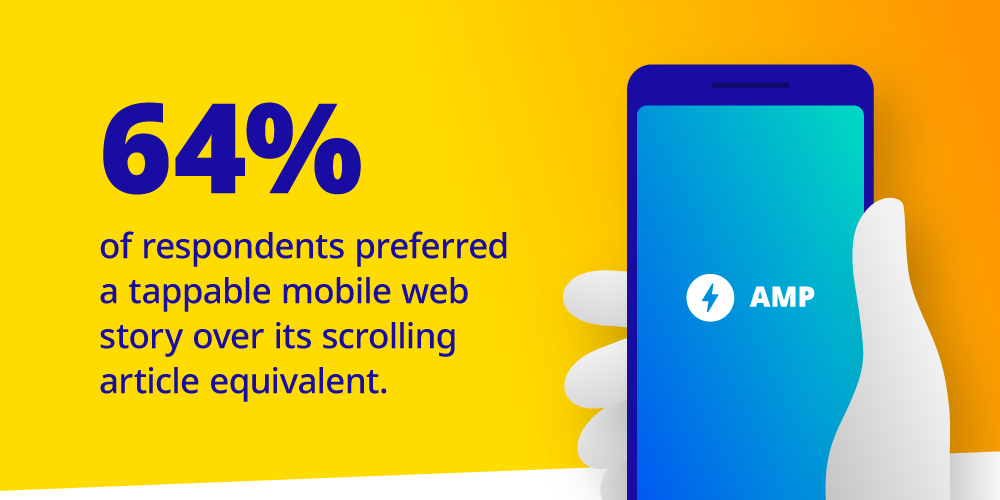Tappable stories have become a major part of the way consumers engage with content — in fact, 60% of weekly mobile content users now consume tappable stories daily on social media. What are tappable stories? They are interactive experiences on mobile devices that allow users to interact with full-screen visuals like images, videos, and text. This popular format, however, has mostly been limited to the closed platforms it typically lives on. Publishers can benefit from tappable stories by providing consumers with innovative content experiences – not only on their social platforms, but on their mobile sites with Web Stories.
To better understand the potential results Web Stories can provide for publishers, Google commissioned Forrester Consulting, a leading global research and advisory firm, to evaluate consumer appetite for tappable stories on the mobile web. The study, titled “Publishers: Capture The Mobile Web Opportunity With Tappable Content”, was conducted September 2019.
To conduct the analysis, Forrester carried out an online survey of 2,062 US online consumers ages 18 to 65 who consume publisher content at least weekly from a mobile device, as well as 22 remote unmoderated user tests with the same audiences. Both studies had participants interact with real-world examples of tappable stories on the mobile web as well as scrolling article equivalents. Forrester found that 64% of respondents preferred the tappable mobile web story format over its scrolling article equivalent.

Some of the key results from the study:
- 74% of smartphone users read or view social stories at least weekly. The demand for consuming social stories is higher than consumers’ desire to share their own stories. Publishers have the opportunity to fill the supply and demand gap on their own mobile sites, which can yield advertising revenue and richer data insights.
- 84% of users felt tappable stories met or exceeded their expectations for ease of navigation. Consumers were also 1.4x more likely to find the method of navigating the tappable story appealing, compared to its scrolling equivalent.
- Over 75% of users are at least somewhat interested in reading tappable stories in their most-read content categories. Data from the study also revealed consumers are highly interested in consuming evergreen lifestyle content from the following categories:
- DIY/How-To
- Home/Cooking
- Sports
As the Forrester Study suggests, there is a unique opportunity for publishers to reach their audiences with a familiar tappable stories format. Web Stories bring that format to the open web and allow publishers to take control of their content without being confined to a single ecosystem. The technology behind Web Stories is still relatively new, but developers have a few options to get started.
You can read the full study here, detailing the opportunity for publishers and content creators to reach existing readers as well as new audiences with a unique, engaging format on the web. The Web Stories format lives online as a web page, and thus is indexable and a part of the open web, allowing anyone to try it on their own site. Web Stories advertising options are still nascent, but we are investing heavily in expanding this area. We are excited to see the results publishers achieve with this mobile-focused format for delivering information as a visually rich, tappable story.
Written by Alex Durán, AMP Project Marketing Lead at Google